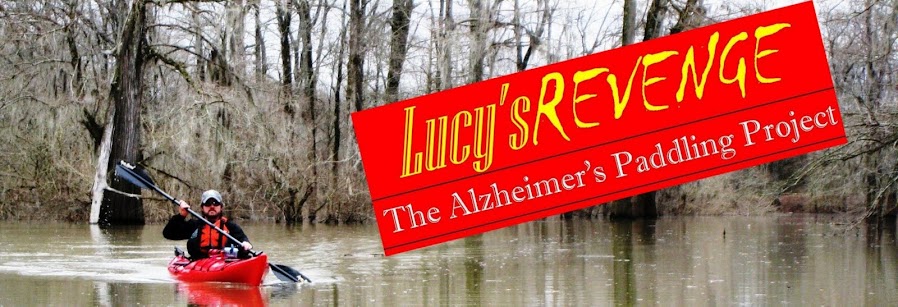November 22, 2010--The Tennessee–Tombigbee Waterway is a 234-mile artificial waterway that provides a connecting link between the Tennessee and Tombigbee rivers. The waterway begins at Pickwick Lake on the Tennessee River, then flows southward through northeast Mississippi and west Alabama, finally connecting with the established Warrior-Tombigbee navigation system at Demopolis, Alabama.
After 12 years of construction, the waterway and its seventeen public ports and terminals opened to commercial traffic in January 1985. In addition to the original 110,000 acres of land acquired for the construction and operation of the project, another 88,000 acres have been purchased and managed by the two state conservation agencies for wildlife habitat preservation and mixed use including hunting and parks.
Sharon and I, along with fellow paddler Dawn Henderson, used one of these parks, DeWayne Hayes Recreation Area, as our base of operation to explore the waters north of Columbus Lake. DeWayne Hayes is operated by the Army Corps of Engineers and is very well maintained and heavily used, especially when there is a big SEC game happening just up the road in Starkville. Despite the numbers we were able to claim a very quiet location in the primitive camping area.
 |
| Monk waits patiently for his opportunity to play in the Tenn-Tom Waterway. |
Stinson Creek enters the Tenn-Tom just north of the park. The creek and the waterway are defined by the wide open areas between the tree-lined banks, but the flooded swamps in between offer some interesting sites to explore, as does the Cypress Swamp to the south of the camp that flows under and around Highway 50. We took a sunset paddle north on Stinson, paddling in and out of several swamps before hitting the big creek, turning on to the Tenn-Tom and heading south.
 |
| Dawn took this picture at the end of the first excursion. The picture is looking back up Stinson Creek as the full moon was rising in the distance. |
We then hopped in the kayaks and headed south towards the entrance to Cypress Swamp. As clearly indicated by the map of our route, we explored a great deal. The water was suprisingly clear, and the water hyacinths and grasses taking root on top of them were extremely thick in some areas.
There is something both comforting and haunting about paddling around in a swamp. Maybe because, due to the stumps and floating plants, it's impossible to get into a hurry. You have no choice but to take your time. But, there is something hauntingly familiar about it, too. With the exception of the occasional distant sounds of vehicles crossing the Highway 50 bridge in the distance, there was an eery quiet. Every so often, a suprised Blue Heron would startle ahead of me and begin a clumsy attempt at takeoff, all legs and neck and squawk. But, other than the sometimes yapping of the prehistoric looking birds, it was just the sounds of the paddles and the water.
We headed out of Cypress Swamp heading south on the Tenn-Tom for about a half mile. I noticed several other inlets on the west side of the waterway worthy of exploration. But, by this time the clock was telling me not to forget I had an appointment this evening back in Madison. I did my best to get the heart pumping on the paddle back, running off and leaving my companions to themselves. I was hoping to get in the excercise I would miss out on by not paddling the 25 to 30 mile days my body has become accustomed to. I may not have added as many miles in the 10-mile trek as I normally do, but I certainly got something out of the trip.
I hope to one day paddle the entire length of the Tenn-Tom. It's worthy of a longer closer look.


No comments:
Post a Comment